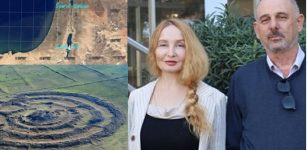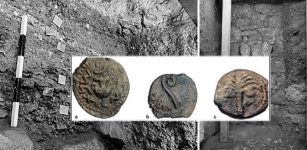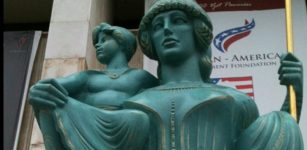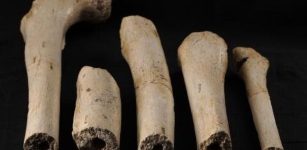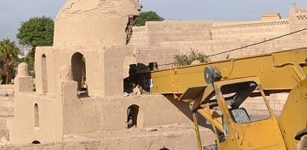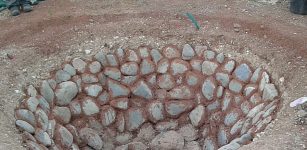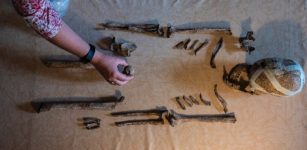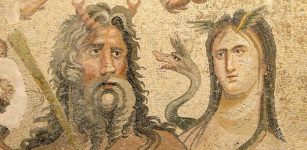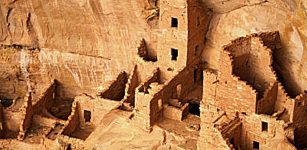Two Unique Antiquity-Dated Discoveries Have Been Made In The Ancient City of Agrigento, Sicily
Conny Waters - AncientPages.com - Two unique antiquity-dated discoveries have been made by an international team of researchers led by Professor Monika Trümper and Dr. Thomas Lappi from Freie Universität Berlin.
Inscribed seats B in the paradromis with inscription of the Augustan period. Image credit: : M. Trümper
The site of these archaeological finds is the Italian town of Agrigento, located on Sicily's southwest coast.
The discoveries include an ancient roofed semicircular auditorium (or theater), which was once capable of accommodating approximately 200 people, and two inscribed blocks that reveal details about ancient social life.
The auditorium is an integral component of a remarkable gymnasium, highlighting the significant emphasis on intellectual and athletic training during this era. This combination underscores the balanced approach to education and personal development valued at the time.
The second significant discovery includes two inscribed blocks that reveal details about ancient social life. The ensemble unearthed by the researchers represents the sole known example of its type in the western Mediterranean.
In ancient Greek cities, gymnasiums were places where young men received both physical and scholarly instruction to prepare them for future civic duties. They were like modern fitness centers combined with schools.
From the fourth century BCE onward, these cities built massive complexes with racetracks, bathing facilities, and spaces for young men to train and study.
Founded around 582 BC by Greek colonists from Gela, Agrigento, then known as Akragas, was one of the leading cities during ancient Greece’s golden age.
Location of trenches in 2025. Source
The city flourished under Theron's leadership in the 5th century BC, marked by ambitious public works and the construction of renowned temples.
The city was also home to a gymnasium, whose construction is considered vast and massive. It represents the only known example of a complex in the western Mediterranean offering 200-meter-long racetracks and a large swimming pool.
An ancient auditorium has been discovered, designed as a small, covered theater capable of seating approximately 200 individuals across eight ascending semicircular rows. When constructed in the second century BCE, this gymnasium was unique in the ancient world for including such an auditorium, setting it apart from other gymnasiums of that era.
A theater-style auditorium was built 250–300 years later in the large gymnasium in Pergamon, modern-day Turkey.
Drone photo of the gymnasium uncovered during excavations in Agrigento.
Image Credit: Thomas Lappi – Monika Trümper, © Freie Universität Berlin, Institute of Classical Archaeology
The auditorium in Agrigento opened up to a large room (11 x 23 meters) with benches, which could also be used for intellectual activities such as lessons, presentations, and competitions. This unique ensemble suggests that maintaining a healthy mind was just as important to the gymnasium patrons as maintaining a healthy body.
Another noteworthy discovery involved two substantial blocks featuring Greek inscriptions. The letters were meticulously engraved into the white plaster surfaces and accentuated with red paint, providing valuable insights into historical practices and communication methods.
The text refers to a gymnasiarch, the leading official overseeing activities in the gymnasium. Additionally, it highlights an individual who personally financed the renovation of the roof of the apodyterium, the changing room. This renovation was dedicated to Hermes and Heracles, both deities associated with Greek gymnasia.
Despite ancient Agrigento being inhabited for over a millennium, it is intriguing to consider how few inscriptions have survived to shed light on the city’s social dynamics. This scarcity invites reflection on the fleeting nature of historical records and the mysteries that remain about past civilizations.
The style of the lettering implies that the inscription was crafted in the late first century BCE, during a period when Agrigento was securely under Roman dominion. This observation suggests that, notwithstanding the shift in governance, the citizens persisted in preserving Greek language, administrative structures, and cultural traditions. Furthermore, it indicates that the gymnasium continued to function and be maintained as the principal educational institution for its young populace.
The researchers involved in the excavation at the site have further plans. In 2026, they hope to make other discoveries related to learning and exercise activities to the north of the discovered auditorium.
The discovery of additional inscriptions will significantly enhance our understanding of the vibrant life that once flourished in the ancient gymnasium of Agrigento.
The researchers from Freie Universität Berlin cooperated with the Politecnico di Bari and Parco Archeologico Valle dei Templi di Agrigento.
Written by Conny Waters - AncientPages.com Staff Writer




